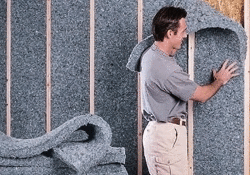ADDING ARCHITECTURAL DETAILS

Adding architectural details There are many ways to apply architectural interest to walls and furniture. Strips of molding can be added directly onto a wall to make panels. Stock molding dresses up an old door to create an enchanting headboard in Something Old, Something New, Architectural depth can also be given to a wall by extending a small baseboard with varying widths of paint. Depending on the style you are building, you may want to add some traditional architectural moldings to your bedroom, or enhance details that are already in place. There is a wide variety of moldings and trims at lumber and hardware stores that come in wood, MDF (medium- density fiberboard), foam, and (more expensive) plaster and are meant to be painted. There is also custom-made quality wood that is meant to be stained or simply varnished so that the grain can be seen. All moldings and trim work are generally sold in 8-foot lengths. Crown or cornice molding is applied around the ceiling. You may select one or more designs and build a deep cornice depending on the height of the walls. For a o-foot wall, a 4- to 6-inch depth is adequate. Baseboards run around the wall at floor level. The minimal 3-inch strips that are found in most new buildings can be built up to a more substantial height of 5 to 8 inches. Trim framing windows and doors, usually about 4 inches wide, can be enhanced by inserting square ornaments at the corners. This not only looks good, but it also saves you from having to miter the corners of the trim. Trim for furniture and headboards You can reinvent the look of any piece of furniture. Build it up with pieces of wood or MDF cut to suit, such as we did for the old door head- board on page 146. Add strips of border molding to enhance the flat face of a dresser, table, or armoire. Paint will bring uniformity to the surface so that you will not be able to tell the old from the new. Decorative techniques and materials can also transform a piece. Apply metallic leaf to a tabletop (page 80), or decoupage a bedside table (page I09). Trompe l'oeil effects such as the pinstripe desk on page 86, the tufted headboard on page 94, and the burled cupboard doors on page I31 create the rich feeling of fabric or fine wood at little cost.